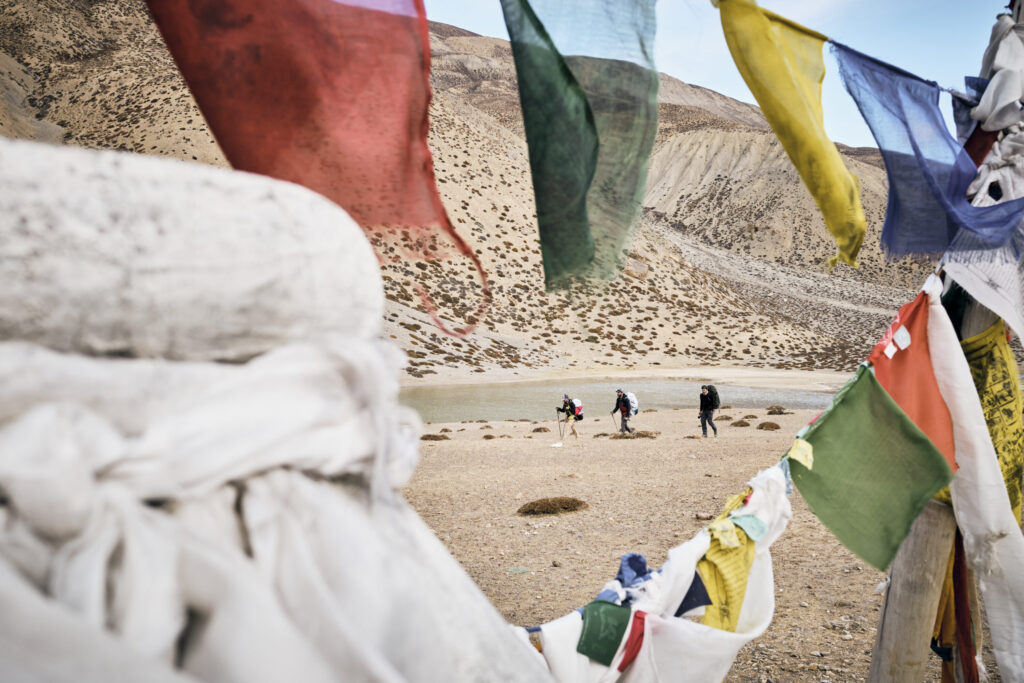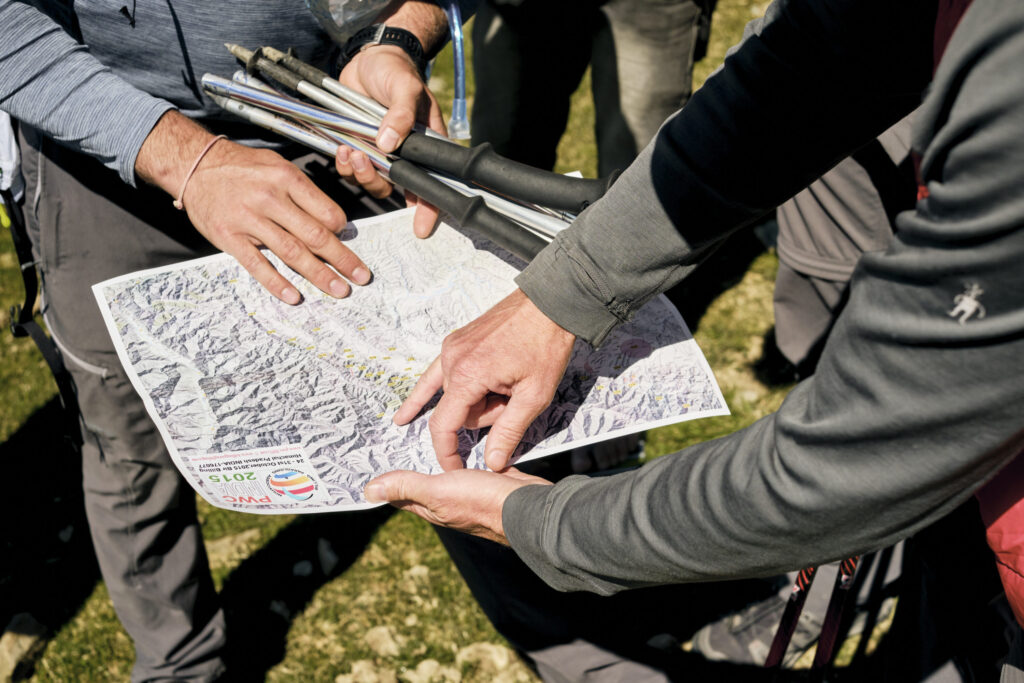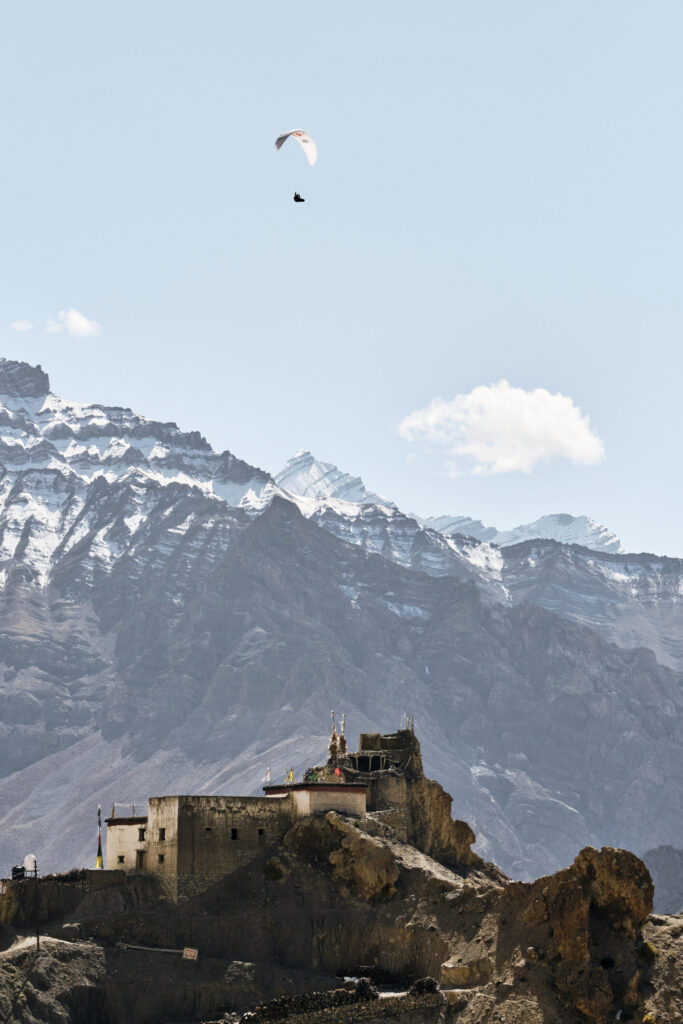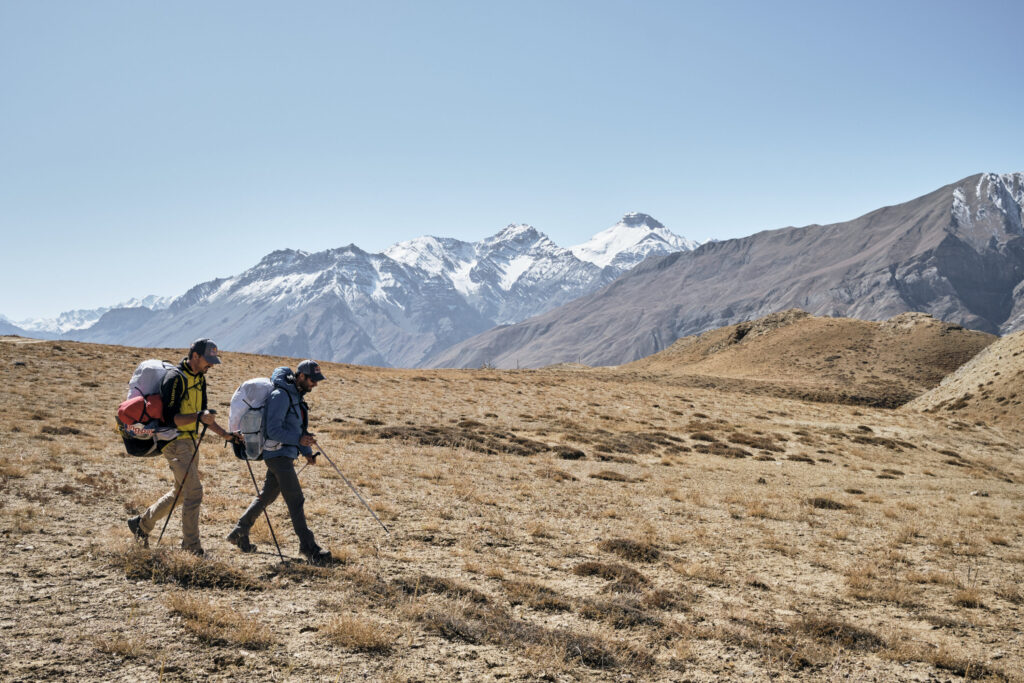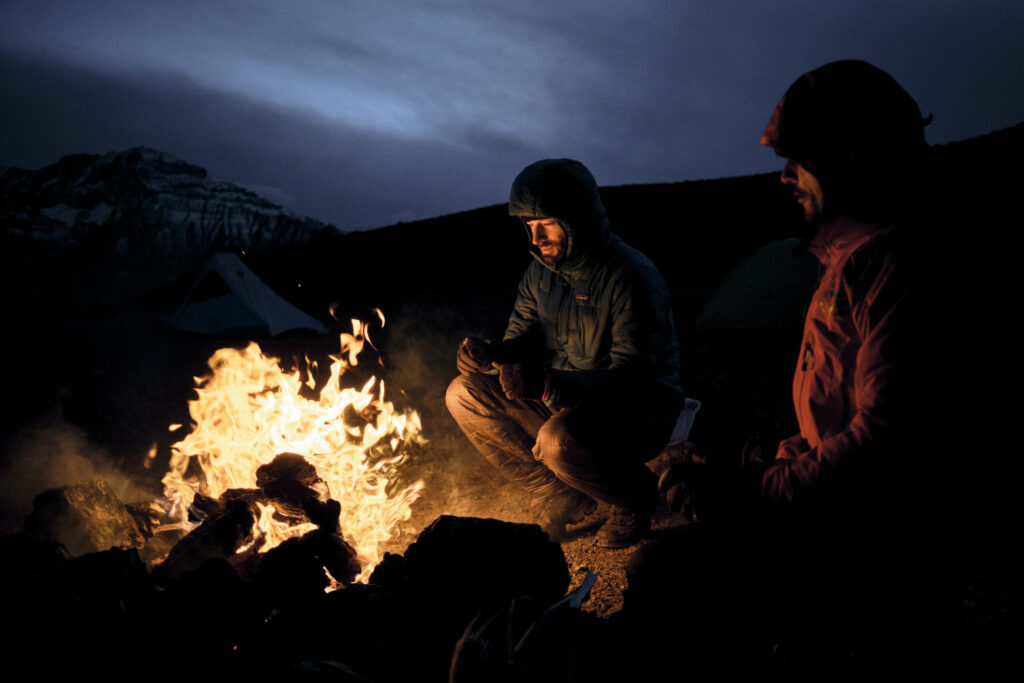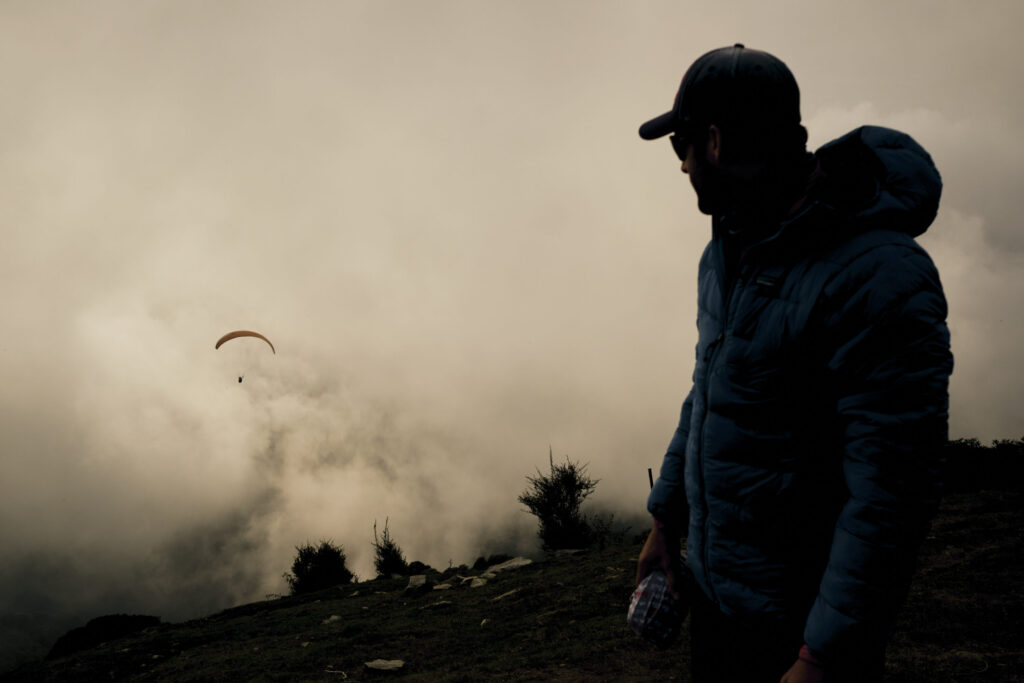Home Story Birdmen of the Himalaya
Birdmen of the Himalaya
Feature type Story
Read time 12 mins
Published Jan 17, 2022
Author Horacio Llorens
Photographer John Stapels / Red Bull
In autumn 2019, two of the world’s leading paraglider pilots, Tom de Dorlodot and Horacio Llorens, travelled to the high valleys of Himachal Pradesh in the Indian Himalaya. Their mission was to fly across some of the most spectacular terrain on Earth by paraglider, and to reach the highest altitudes possible within safe limits. This is the story of their extraordinary journey across the roof of India.
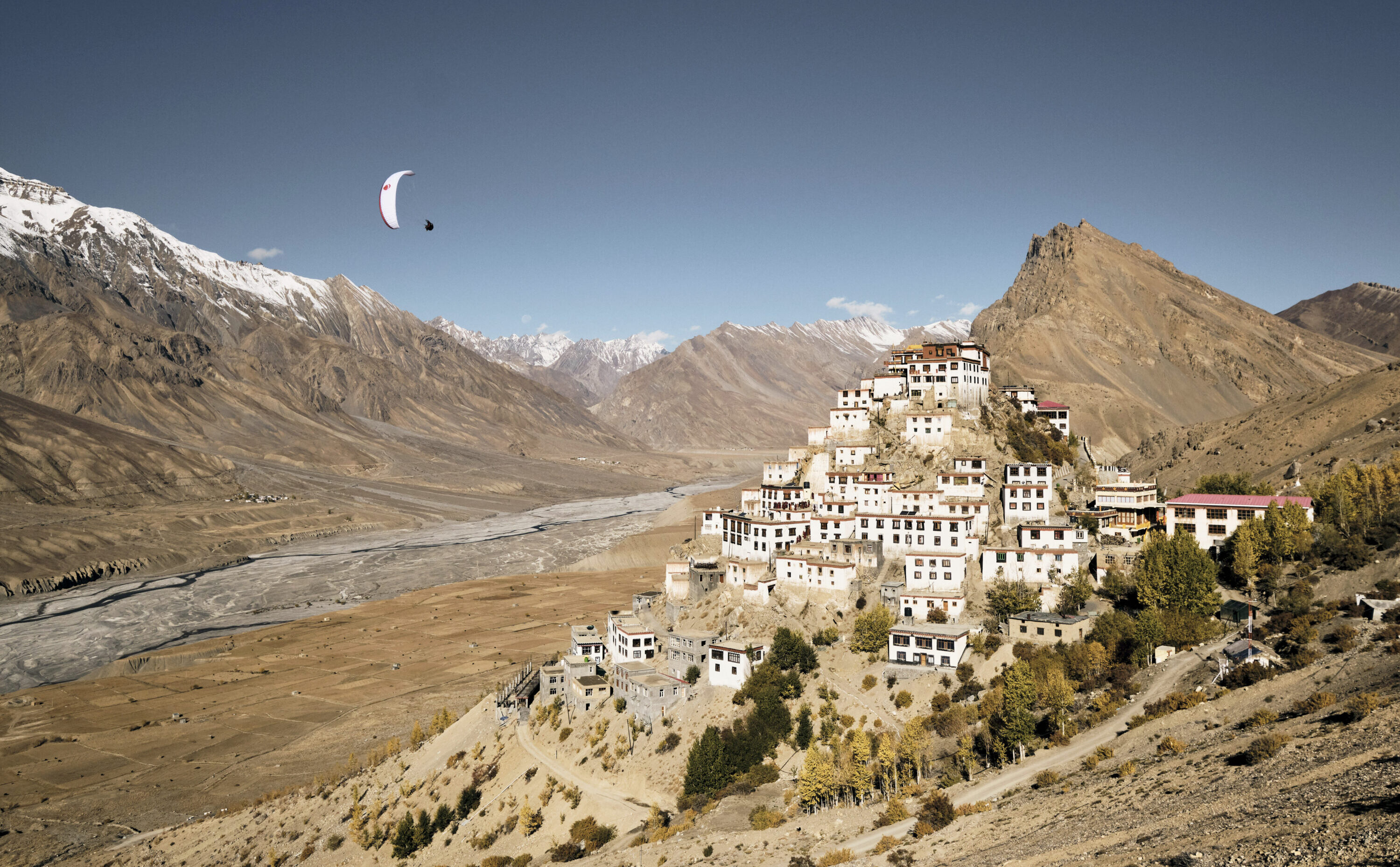
Horacio Llorens flies over the spectacular 1000-year-old gompa [monastery] at Key in the Spiti valley, one of the several large Buddhist monasteries in this region.
It had always been my dream to travel to India; an even greater dream was to fly a paraglider in the Himalaya. As soon as we arrived in the foothills of the greatest mountain range on Earth, the scale and drama of the landscape captivated me completely.
It all started in Bir Billing, a small village close to the town of Manali, where we undertook our first flights. Here, we would test our gear in the thin mountain air of Himachal Pradesh. We spent three days flying in the surrounding valleys; the first major flight took us from Bir to the Manali valley, where we reached over 4000m in altitude, soaring over lush green pastures, verdant forests, and across the flanks of snowy mountains.
Luckily we arrived at our first planned stop in time, before the thermal conditions disappeared without warning. This is a constant hazard when flying in such high mountains, due to the extremely high temperature variations at different altitudes. We were able to continue flying from exactly the same point later that day; in the evening we did a mountain-top landing on a small summit at 3200m. Just below the peak, we found a little hut and a shepherd with his family and his goats in tow. They gave us some dinner, and let us keep warm next to their fire. Despite not being able to understand each other in any language, we had fun and we all laughed a lot. Tom and I went to sleep with dreams of higher and longer flights at the front of our minds.
In the middle of the night the wind started to blow really hard: a storm was coming. It rained heavily for hours, and I realised with some trepidation that my lightweight tent was leaking. It was a long and hard night. In the morning we woke to cloud cover, but we were able to take off, flying nearly all the way to Manali. At the end of the valley we hit some heavy precipitation and dangerously windy conditions. We started to fly backwards towards a section of mountainside that was full of apple trees – a kind of suspended Himalayan orchard. Luckily I managed to land in a small clearing, but Tom couldn’t make it and had a hard landing slightly injuring his shoulder. Our very first day of flying here was a stark reminder of just how challenging flying a paraglider in the Himalaya can be.
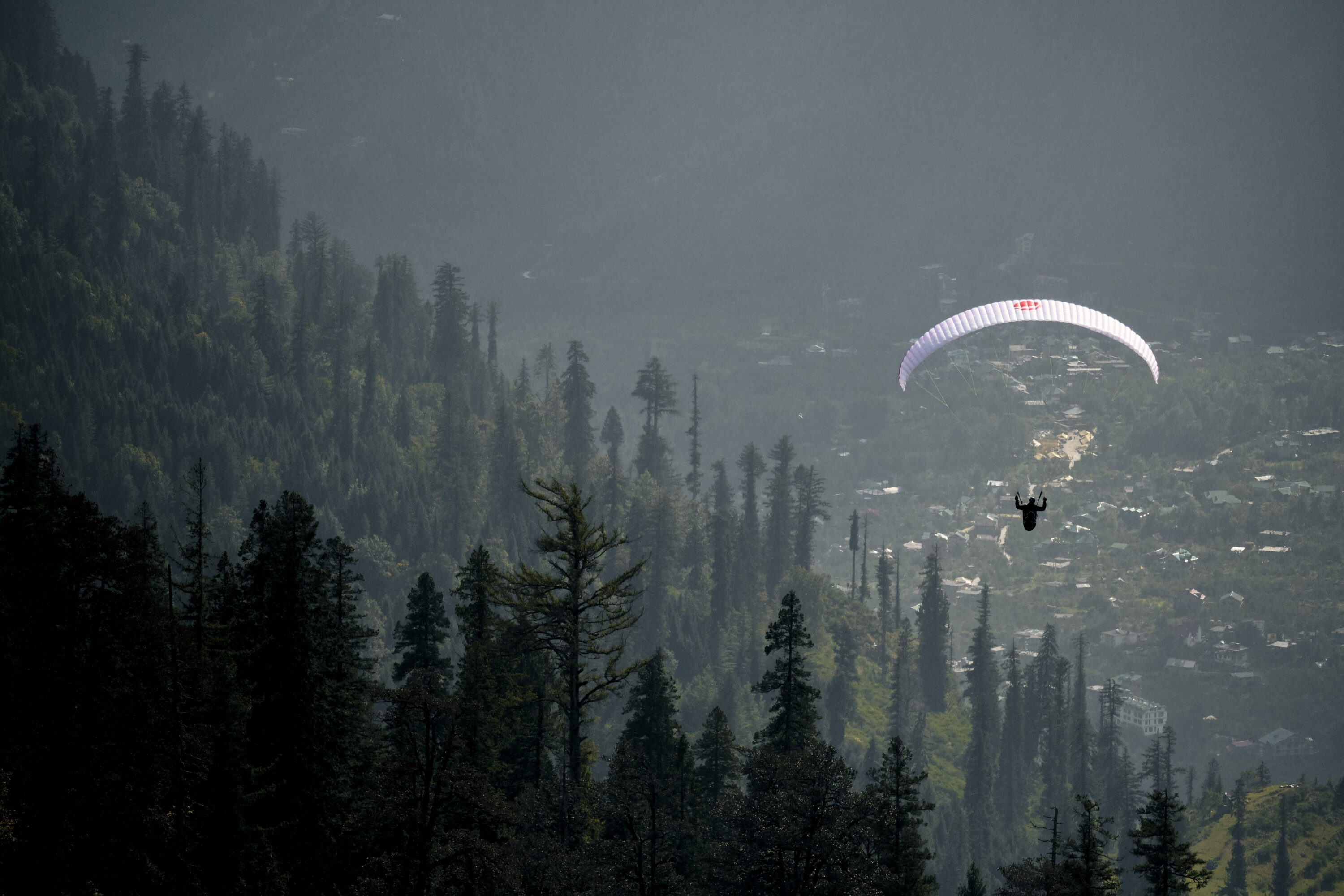
Flying to Manali after one of the test flights early in the expedition.
We flew among the enormous mountains that encased us, crossing canyons where white rivers flowed fast and wild
As Tom’s shoulder healed, I spent the two following days flying in the surroundings of Manali with Debu, a well-known Indian pilot and my friend for several years since we competed together in the Acrobatics World Cup. I became increasingly amazed by the high mountains around Manali in those two days with Debu: the Himalaya had already cast its spell over me.
Four days later, Tom’s shoulder was feeling better. Debu, Tom, and myself now planned a major flight. Our goal was clear: to be able to clear the 3,978m Rohtang Pass and enter the high Himalaya. This flight had been completed by very few pilots to date: there’s a lot of commitment involved in flying the complex, technical terrain of steep-sided Himalayan valleys with huge thermal changes, and the sudden winds they can generate.
We took off from a clearing in the forest above Manali early the following morning. At the beginning of our flight, the thermal conditions were not particularly strong, and we were finding it difficult to gain altitude. Eventually, all three of us managed to reach an altitude of 5000m on the south side of the Rohtang Pass, and we decided to cross. Debu, who was a little lower than Tom and I, went back to try to go higher, but he couldn’t reach a safe altitude to cross the pass itself, so he stayed on the Manali side.
Tom and I now entered the next valley. The landscape was totally transformed as we crossed the northern limit of the Indian monsoon rain: north of the Rohtang, the mountains were dry, just stone and soil with very little vegetation. The strong katabatic winds blowing down from the highest peaks around us would be the keynote from now on.
As soon as we entered this valley we realised that the wind was very strong and there were few thermals. We were able to climb with a lot of effort and turbulence to reach the summit of the mountain above the Rohtang Pass, climbing up to a maximum altitude of 5300m. All around us, peaks more than 6000m glittered in the sunlight. By the early afternoon, we managed to reach the isolated village of Keylong. We landed here on a small rocky plain and waited for the rest of the team.
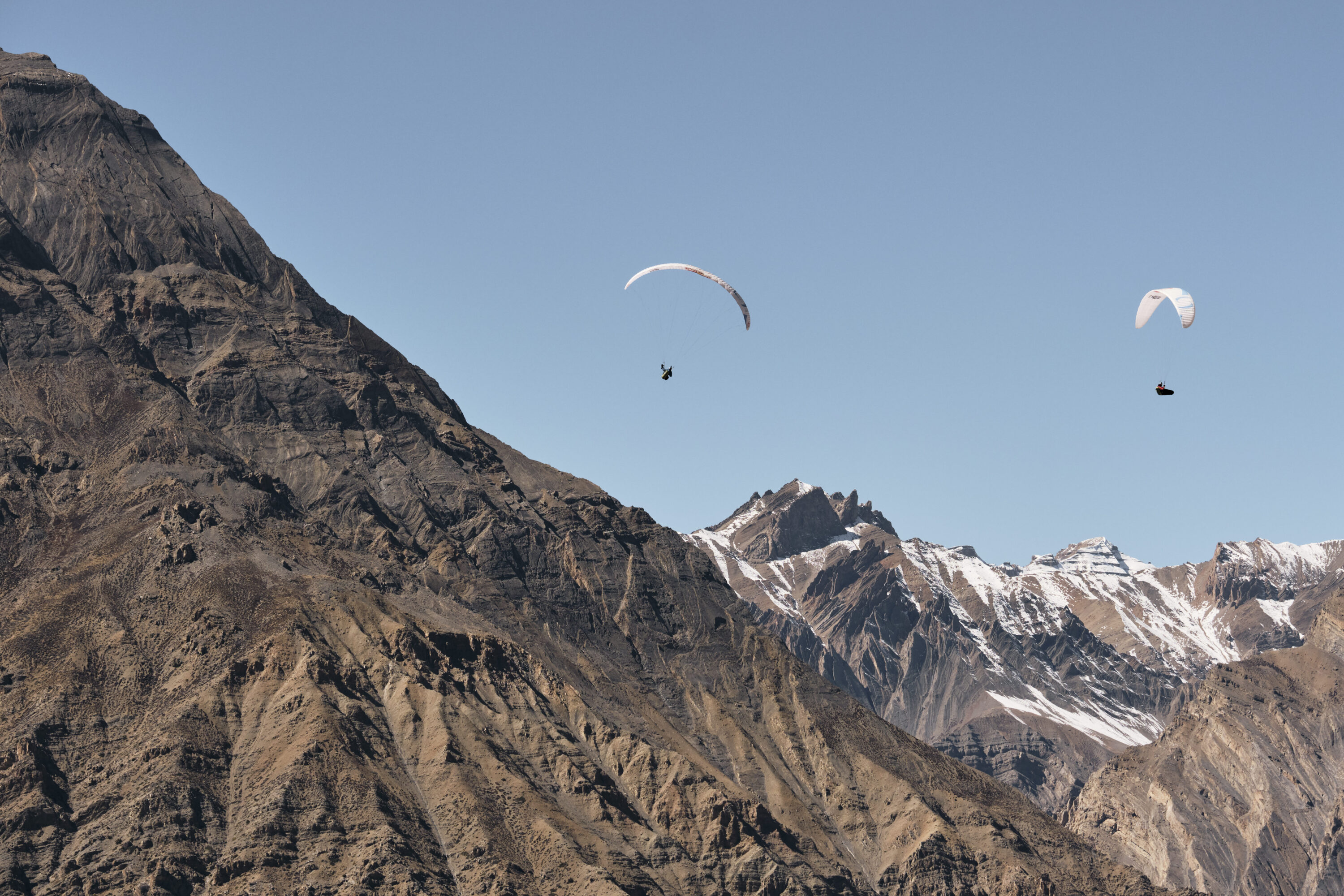
Tom De Dorlodot And Horacio Llorens fly across the high ridges of Spiti in the Indian Himalaya. On this expedition, both pilots reached altitudes of over 6,200m.
The next day we decided to go to Spiti Valley by road, since it was going to be impossible to reach them flying due to dangerous turbulence. When we arrived in Spiti, the valley captivated us immediately: a high altitude desert surrounded by shining summits and dotted with white-walled villages and impressive monasteries.
Tom and I now prepared our flying and bivouac gear for the next stage of our expedition. We made a short flight that day, in difficult, turbulent conditions, and were able to land at 4000m elevation from where we would continue the following day. It was bitterly cold that night, even in our advanced four-season sleeping bags. Flying conditions the following morning were much better, and we quickly went up to nearly 6000m, where we started to see the Spiti Valley from another perspective. At this point, we both realised we had fallen in love with these mountains.
We did a gorgeous flight to the 1200-year-old Dankhar Gompa, the oldest Buddhist monastery in Spiti. We flew past enormous rock walls and through perpendicular valleys; we both enjoyed being at Dankhar so much decided to spend the night right there in the lodgings of the monastery.
Later the next day, we took off with the intention of flying to the nearby hamlet of Ki, where the rest of the team were waiting. After our first ascent, though, we realised the cloudbase was growing, and it was starting to rain in some areas of the valley, creating dangerous flying conditions. So, instead of flying to Ki, we did a local flight right over the monastery of Dhankar; neither of us could believe we were actually flying in such a magical place. We were told that nobody had ever flown a paraglider in this particular valley; having the opportunity to be the first to do so was worth more than any international trophy.
Soaring across the mountains above the Dankhar monastery was one of the best days of flying we could remember
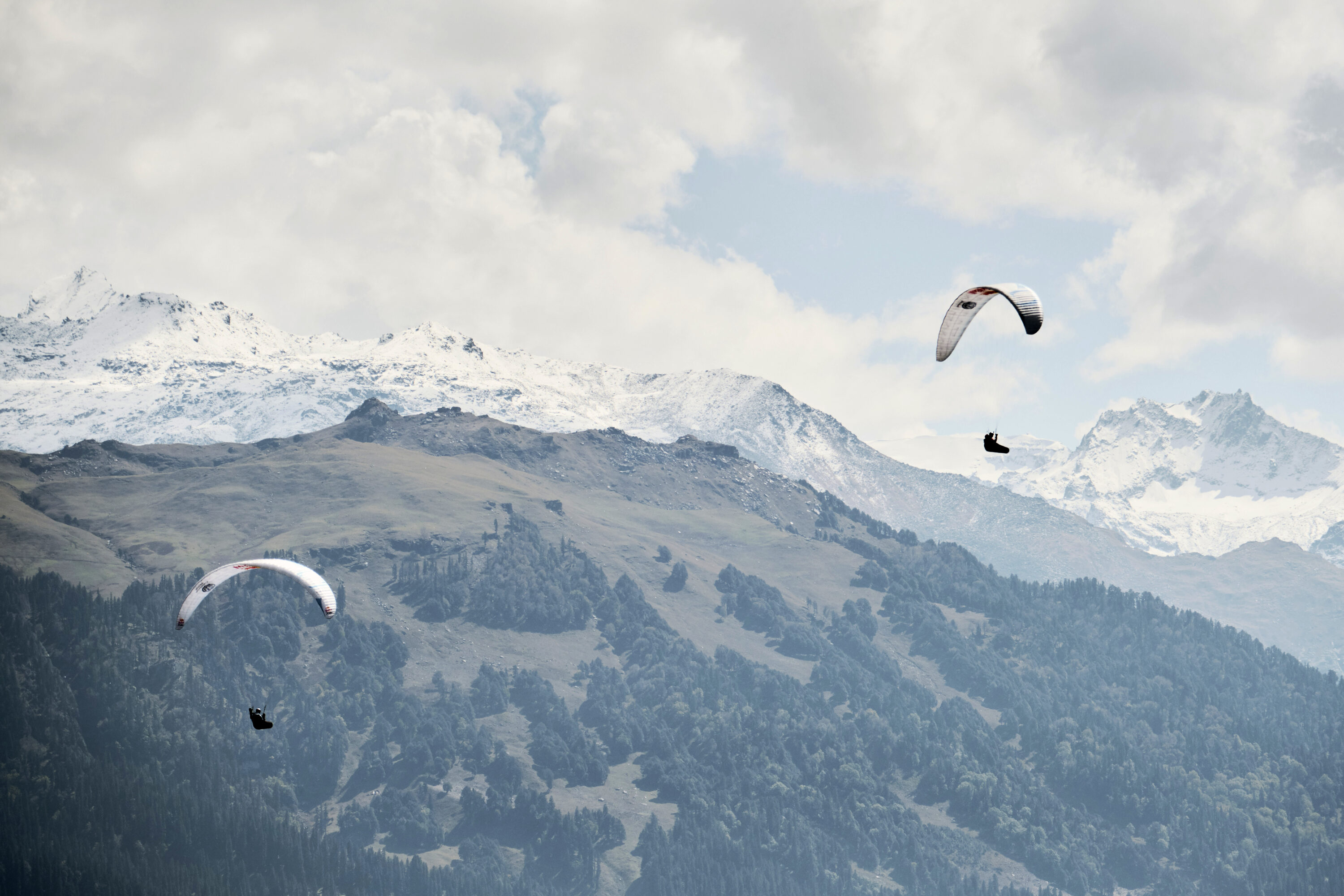
Tom de Dorlodot and Horacio Llorens on a test flight above Manali early in the expedition: high winds and turbulence made this flight like many, technically complex.
On the other side of the valley from Dhankar, above the village of Key where we met the rest of the team, the conditions were better. Here, we managed to climb up to an altitude of just over 6200m – a personal record for us both. Despite the fact we were already quite well acclimatised, we decided to leave it there. Cloudbase was at 7000m, but we weren’t carrying supplementary oxygen and we didn’t want to force things.
Above Key, we flew among the enormous mountains that encased us, crossing several shady canyons where white rivers flowed fast and wild. Finally, at dusk, we traversed back across the valley again towards Dankhar, where the great monastery was waiting for us; it had been one of the best days of flying either of us could remember.
We landed above the village of Dankhar, and hiked up until we found a little take-off for the next day, which had a perfect small lake to get water and camp that night. We spent the night by a Buddhist stupa that was near the lake. We made a little fire and reflected over the good stories of the last few days under a sky full of stars.
The following day would be our last at Dankhar, and our final flight, as it turned out, of the entire expedition. We flew high above the glittering white walls of the monastery as the distinctive coloured prayer flags fluttered from the rafters. The wind was stronger each time we climbed, though, and we soon decided to land for safety. We were satisfied with what we had achieved: we had flown at last in the high Himalaya.
Without any doubts, technical paraglider flights in the high mountains should be done as a team; a pilot flying alone can never operate at the necessary margin of safety required in a place like the Indian Himalaya. But flying as a team with Tom, I always felt safe. As we usually say, ‘we are birds!’
Don’t miss a single adventure
Sign up to our free newsletter and get a weekly BASE hit to your inbox
You might also like
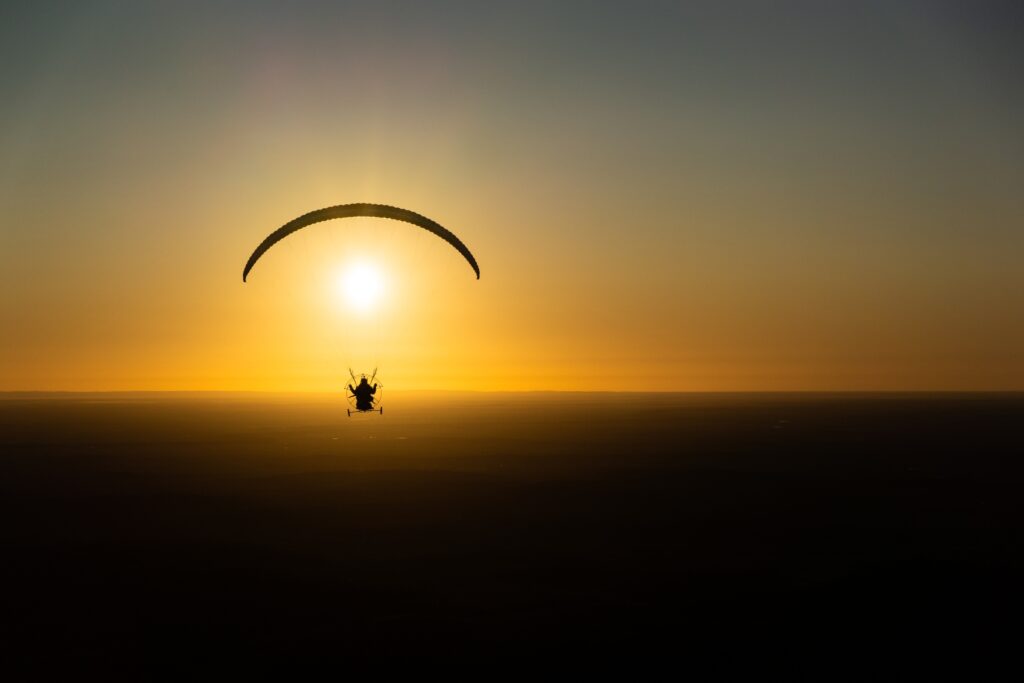
Story • Rich Dolan • Mar 28, 2023
How Far Can You Fly a Paramotor?
A world-first 5000km coast-to-coast expedition to cross Australia by paramotor
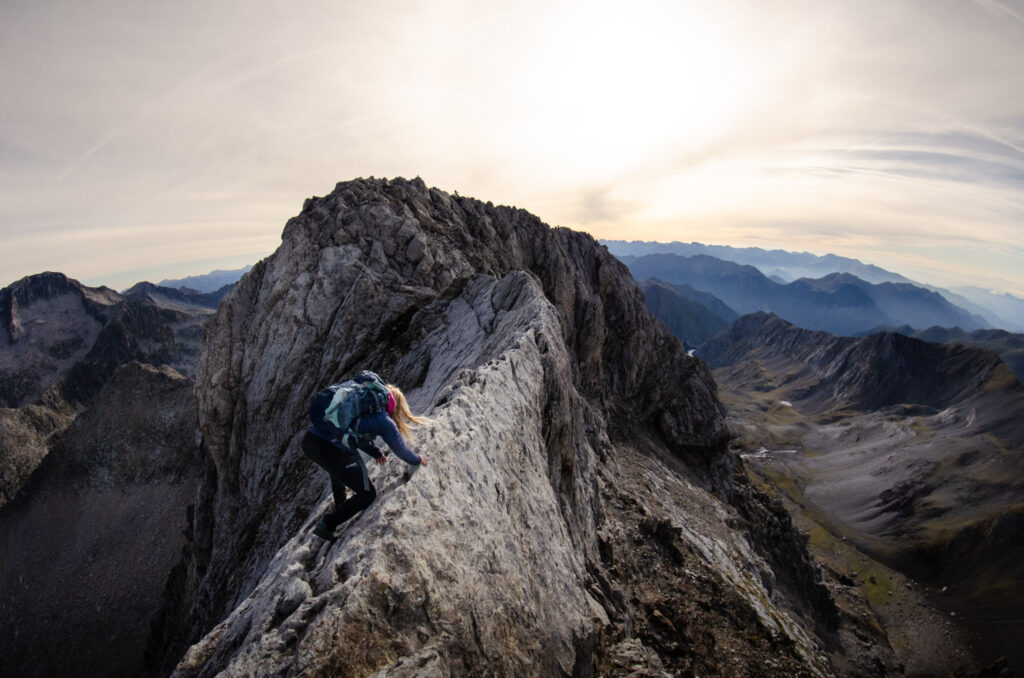
Story • Will Appleyard • Jan 19, 2023
My Adventure Playground: A Love Letter to Spain
A subjective analysis of what makes Spain the perfect home for the adventure-obsessed
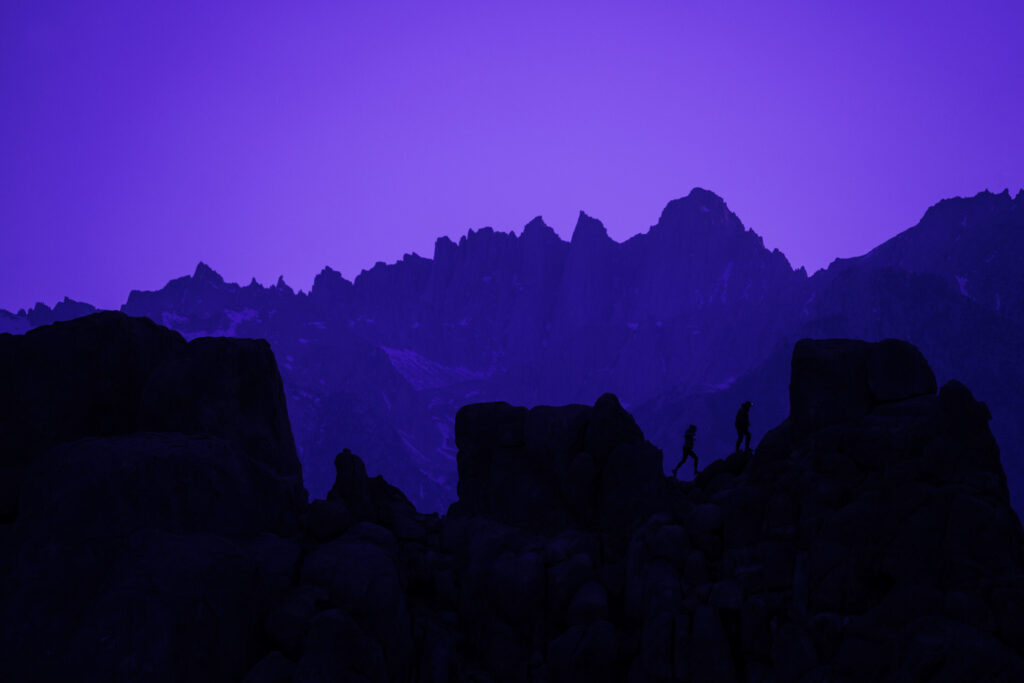
Story • Ben Horton • Oct 25, 2022
My Adventure Playground: The Alabama Hills
A personal guide to getting the most out of this sometimes eerie but strikingly unique landscape

